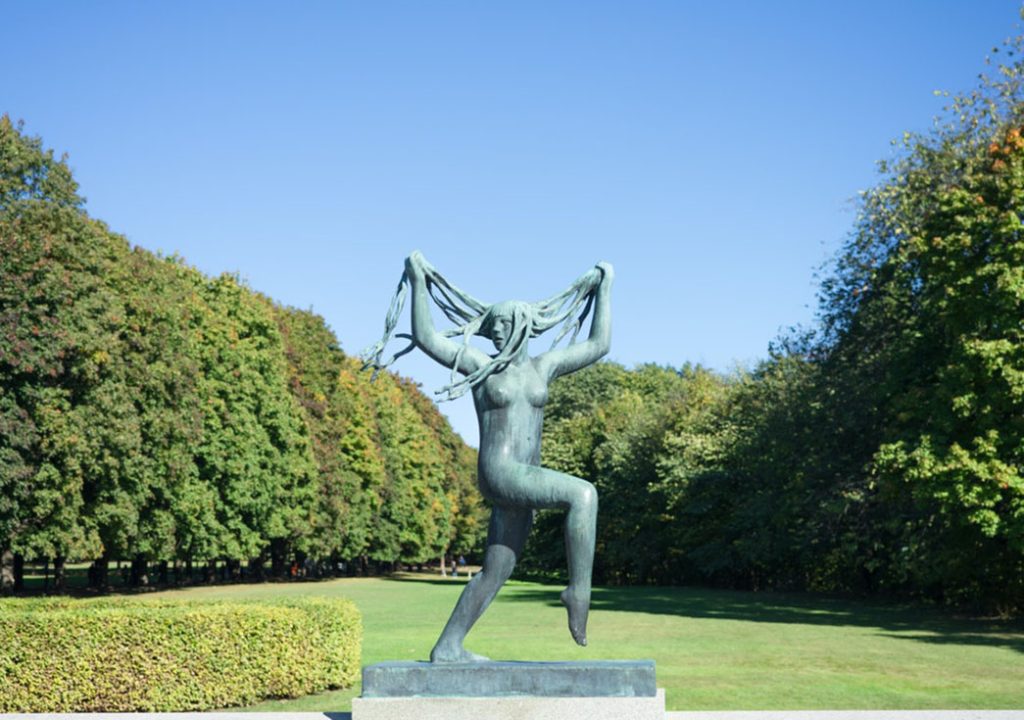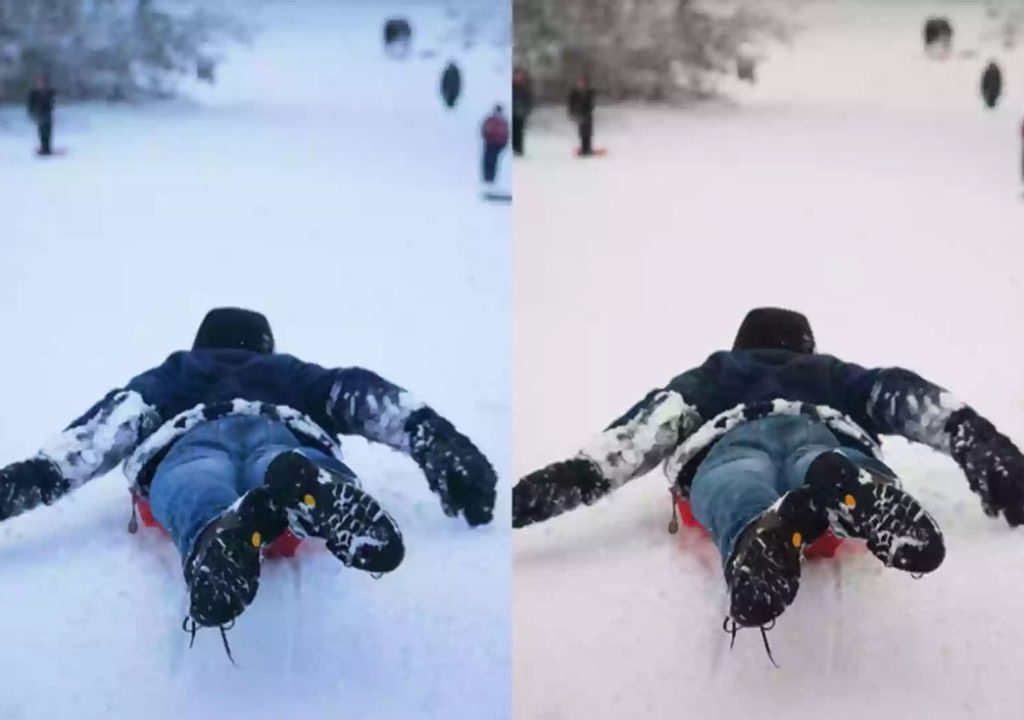Capturing Oslo during its winter transformation is an artistic expedition filled with marvels waiting to be immortalized through the lens. The allure of this season lies in the city’s metamorphosis into a picturesque wonderland adorned with blankets of snow, showcasing an array of landscapes, from serene parks to bustling cityscapes painted in wintry hues. This season’s charm stems from the contrasts it offers—the juxtaposition of nature’s tranquility and the vibrant urban life beneath the frosty canopy.
Photographing Oslo in winter requires more than just a camera; it demands an understanding of the unique lighting conditions and preparation to seize fleeting moments. The shorter daylight hours and diffused lighting during this season call for skillful techniques to harness the city’s mesmerizing beauty. Being equipped with weather-sealed gear and honing techniques to capture the nuances of winter light become paramount to encapsulate Oslo’s magical essence. Preparation and mastery of photography techniques are the keys to freezing the ephemeral charm of Oslo’s winter scenes into timeless frames.
Preparing for Winter Photography in Oslo
Gear Preparation:
Capturing the wintry beauty of Oslo demands the right photography gear, especially when facing the challenges posed by cold weather conditions.
Essential Equipment:
- Weather-Sealed Cameras: Opt for cameras designed to withstand extreme weather conditions. These provide protection against moisture and ensure functionality in freezing temperatures.
- Sturdy Tripods: Winter landscapes often require longer exposures. A sturdy tripod becomes crucial to stabilize shots, especially on icy or windy terrain.
- Variety of Lenses: Carry an assortment of lenses to adapt to diverse scenes. Wide-angle lenses excel in capturing expansive snow-covered landscapes, while telephoto lenses bring distant details closer.
- Protective Gear: Don’t forget to shield your equipment from the elements. Use camera covers, lens hoods, and lens cloths to safeguard against snow, frost, and potential moisture.
Understanding Light Conditions:
Oslo’s winter days are characterized by shorter daylight hours, but they offer unique lighting nuances that can enhance your photographs.
Dawn and Dusk Photography:
- Golden Hour Brilliance: Make the most of the fleeting golden hour. The low-angled sunlight casts warm hues over the snowy landscapes, accentuating their beauty.
- Soft Light Opportunities: Embrace the soft, diffused light during dawn and dusk for balanced exposure. Experiment with silhouettes against the horizon or capturing intricate frost patterns.
Twilight’s Allure:
- Blue Hour Wonders: Explore the captivating blue hour just before sunrise or after sunset. Oslo’s winter nights cast a serene blue hue, perfect for capturing cityscapes or the fjords.
- Contrasting City Lights: Contrast the city’s illuminated charm against the winter landscape during twilight. This juxtaposition creates an intriguing blend of natural and artificial light.
Mastering the understanding and adaptation to Oslo’s winter light conditions will elevate your photography skills, allowing you to create captivating compositions that authentically encapsulate the ethereal beauty of the city.
Mastering Composition Techniques
Embracing Snow and Ice:
Winter in Oslo provides a canvas of snow-covered landscapes and glistening ice formations, offering photographers a wealth of artistic possibilities through careful composition techniques.
- Framing and Angles: Experiment with various angles to capture the vastness of snowy expanses. Low-angle shots against the snow emphasize depth, while high angles showcase patterns and textures from above.
- Detail-Oriented Shots: Focus on intricate snow patterns, frozen droplets, or individual ice crystals. Employ a shallow depth of field to isolate these details, creating visually stunning and intimate images.
- Incorporating Elements: Introduce foreground elements such as frost-covered branches or partially buried objects to add layers and depth to your compositions, providing context and interest.
Exploring Urban Winter Scenes:
Oslo’s urban landscape transforms into a captivating setting during winter, blending architectural marvels with the serene allure of snow-covered streets.
- Balancing Natural and Urban Elements: Frame your shots to juxtapose natural elements like snow-draped trees or parks against the city’s architecture. This balance adds visual intrigue and harmony to your urban winter compositions.
- Utilizing Leading Lines: Incorporate leading lines from roads, paths, or architectural features to guide the viewer’s eye through the image. Snow-covered streets create compelling leading lines in urban scenes.
- Harnessing Reflective Surfaces: Leverage the reflective quality of snow-covered surfaces to capture intriguing reflections. City lights or colorful buildings reflected off icy pathways or bodies of water can add depth and interest to your urban winter captures.
Capturing Oslo’s Winter Landscapes
Vigeland Sculpture Park:
Photographing Sculptures in Winter’s Embrace:
Winter offers a unique canvas for capturing the sculptures in Vigeland Park. Utilize the snowy backdrop to enhance the sculptures’ intricate details. Experiment with various angles and perspectives to highlight the contrast between the sculptures and the pristine snow, adding depth to your compositions.

Emphasizing Contrasts:
Leverage the natural contrast between the sculptures and the snow-covered surroundings. Adjust exposure settings to accentuate the textures and shapes of the sculptures against the white backdrop. Utilize the interplay of light and shadows to create compelling visual contrasts.
Fjord Views and Coastal Landscapes:
Capturing Frozen Fjords:
Oslo’s frozen fjords offer a picturesque setting against the cityscape. Frame the frozen waters against the urban landscape to showcase the serene beauty of icy expanses. Experiment with different compositions to capture the vastness of frozen water bodies and focus on intricate ice formations.
Exposure and Reflections:
Adjust exposure levels to balance the brightness of snowy landscapes and icy waters. Utilize a polarizing filter to reduce glare and enhance reflections. Explore capturing reflections on the icy surfaces, incorporating city lights or colorful structures reflected off the frozen waters to add depth to your images.
Mastering the art of photographing Oslo’s winter landscapes requires an understanding of contrasts, angles, and the play of light. By creatively capturing the sculptures in Vigeland Park and the frozen fjords against the cityscape, photographers can immortalize the serene beauty and artistic allure of Oslo’s winter scenes.
Portraying Winter Activities and Culture
Sledding and Skiing Moments:
Capturing Dynamic Winter Sports:
Freezing motion is essential for action-packed winter sports. Use a fast shutter speed (around 1/500 or faster) to avoid blurring and freeze the action. Pre-focus on the anticipated spot and utilize continuous shooting mode to capture sequences of movements.
Showcasing Energy and Action:
Focus on conveying the thrill and energy of winter sports. Experiment with diverse angles to capture the excitement. Burst mode enables capturing a series of shots rapidly, allowing you to select frames that best portray the intensity of the action.
Cultural Events and Festivities:
Photographing Festive Atmospheres:
Engage with Oslo’s cultural events and festivals to capture the joy and traditions. Interact with participants to understand their emotions and the significance of rituals. Utilize natural light creatively to enhance the festive atmosphere.
Highlighting Traditions and Emotions:
Pay attention to details reflecting cultural traditions. Capture genuine emotions and gestures that convey the event’s spirit. Use depth-of-field techniques to emphasize essential elements while maintaining the event’s context.
Capturing Oslo’s winter activities and cultural celebrations demands skill in freezing action during sports moments and expressing the essence of traditions in festivals. By skillfully freezing motion in sports photography and portraying the emotional richness of cultural events, photographers can effectively document the vibrant winter tapestry of Oslo’s culture.
Post-Processing and Editing Tips
Winter photography often requires specific adjustments during post-processing to achieve optimal results.
Exposure Adjustments:
- Compensate for the camera’s tendency to underexpose snow scenes. Increase exposure slightly to prevent snow from appearing gray or dull.
- Utilize the histogram to ensure proper exposure without losing details in the snow.
White Balance for Winter Scenes:

- Counteract the bluish tones prevalent in winter settings by adjusting the white balance. Experiment with presets like “cloudy” or “shade” to add warmth to the overall tone.
- Fine-tune the white balance manually for more precise adjustments, aiming for a natural yet inviting warmth without compromising the snow’s appearance.
Enhancing Contrasts and Details:
- Use targeted adjustments such as curves or levels to boost contrast selectively in snow or ice without affecting other elements in the image.
- Adjust clarity or sharpening to bring out intricate details in snowflakes or frost, enhancing the overall visual impact of the image.
Creating Vivid Winter Scenes:
- Enhance colors cautiously to make the winter landscape more vibrant. Adjust vibrancy or saturation conservatively to maintain a natural look while ensuring colors appear lively.
- Experiment with split-toning to infuse warmth into highlights and coolness into shadows, adding depth and mood to your photographs.
Preserving a Natural Feel:
- Avoid over-editing, striving for a balanced approach that enhances the image while retaining its authenticity.
- Continuously refer back to the original scene to ensure your edits enhance the beauty of the winter landscape without altering its essence drastically.
Capturing Oslo’s winter charm demands meticulous preparation, technical proficiency, and an artistic eye. Emphasizing the importance of readiness, gear selection, and understanding light conditions ensures photographers can navigate and seize the best moments. Experimenting with compositions, framing snowscapes, and highlighting contrasts elevates the allure of winter landscapes. Exploring cultural events and action-packed sports offers a diverse canvas for evocative storytelling. Post-processing nuances like exposure adjustments and enhancing details in snow crystallize the beauty of Oslo’s winter scenes. Encouraging photographers to venture forth, experiment creatively, and embrace the magic of winter photography in Oslo fosters a deeper connection, allowing them to encapsulate the enchanting essence of this Nordic wonderland through their lenses.